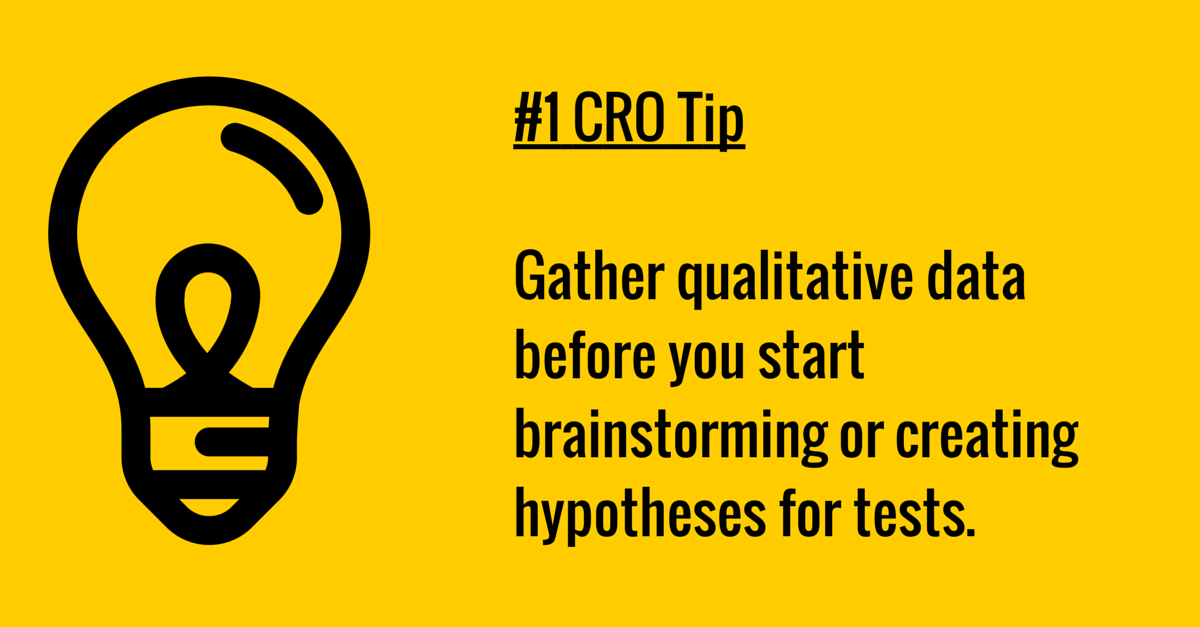#SMX Sneak Peak: Conversion Rate Rock Stars
Inbound marketer Purna Virji has been honing her CRO game for more than eight years. In that time she has become one of the industry’s most prominent experts focused on conversion through her column at Search Engine Watch and her speaking engagements at SMX, Affiliate Summit, and the ecommerce conference eTail. When she speaks at the conversion-focused SMX Advanced session “Conversion Rate Rockstars,” her tips will revolve around ways to drive your efforts with data. In advance of SMX Advanced, we asked Virji to share some next-level conversion optimization advice to help digital marketers expand their field of knowledge. In this interview, Virji looks at:
- What useful qualitative data (data you can’t put a number on) can be used to inform conversion optimization
- Myths of conversion optimization that could be holding you back
- How to use PR and traditional marketing in conversion optimization efforts
- Conversion and usability obstacles unique to the mobile experience
 Conversion rate optimization is a chief concern for any digital marketer. Conversions (sales, leads, sign-ups, etc.) are, after all, how you prove the value of what you’re doing as an optimizer or paid search manager. The more conversions you can claim for your efforts, the more your own department budget can grow. Here Virji shares how to go about improving the rate of website conversion by looking at how visitors interact with your site now.
Conversion rate optimization is a chief concern for any digital marketer. Conversions (sales, leads, sign-ups, etc.) are, after all, how you prove the value of what you’re doing as an optimizer or paid search manager. The more conversions you can claim for your efforts, the more your own department budget can grow. Here Virji shares how to go about improving the rate of website conversion by looking at how visitors interact with your site now.
“Gather qualitative data before you start brainstorming or creating hypotheses for tests,” said Virji. Remember, qualitative data is any data that’s not a number. Qualitative data includes attributes, qualities and characteristics used to describe your visitor’s behavior when they’re on your site. When it comes to qualitative data, Virji says web marketers can gain insights from:
- Purchase motivations: Sometimes these can surprise you. What you feel is the main USP might not be what’s actually resonating.
- Landing page and ad experience: What information could be a turn-off? What are people surprised to learn? What do they connect with the most?
- Why they don’t buy: Are they going to a competitor? Was there something you could have done to persuade them to purchase?
“Testing is expensive since not only do you have the actual testing cost, but there is also opportunity cost to consider. A lot of tests are based solely on analytics data and looking at performance of KPIs and other numeric metrics. Certainly that can be very effective. However, without the qualitative understanding of your customers and how they interact with your site, you could be missing out on achieving your maximum profit potential. These qualitative insights can help you not only strengthen your purchase triggers but also overcome any objections or hindrances to converting.” said Virji.
Want to take your CRO to the next level? Read on for more tips and strategies for increasing conversion rate (CVR) in this exclusive interview with Purna Virji.
Kristi Kellogg: Can you share some cringe-worthy examples of mistakes that website owners have made on the path to conversion success (that we can then avoid!)?
PV: Sure! It’s always good (and less expensive!) to learn from other peoples’ mistakes. A couple of head-smacking mistakes that come to mind are:
- Not testing till significance: When there is insufficient data, the standard deviation is greater and tests can see a higher level of variance at the start. Additionally, factors like day of the week can also come into play, so making decisions based on insufficient data is a huge no-no. Panicking early and stopping the test means you lose out on any learnings, or on the other hand, happily crowing a winner without reaching statistical significance can be a costly mistake. Ideally, it’s best to achieve a 95 percent confidence level of statistical significance and if your test can reach that in under a week, it’s still best to run it for two full weeks to get proper understanding of variance by day of week.
- Assuming a winner in one channel will work across all channels: Rolling out a winning test from one channel, e.g. PPC, across all channels without testing them first can be a big mistake. Traffic behaviors vary by source and someone actively searching on Google may be at a different stage of the funnel than someone clicking from a display ad. Test out winners in different channels to ensure they’re winners there too before rolling them out.
- Listening to HiPPOs (highest paid people in the office): The boss hates this color and wants it changed. Or they’re sure that because the competition has a long landing page, you need one, too. While it’s great that they’re so involved with testing and have recommendations, going down this path can lead to wasted time and money. The main people you need to be listening to are your customers. Use qualitative data to better form your tests and you have a much higher probability of success.
KK: What are some myths circulating around conversion rate optimization?
PV: There are several of these that float around. The top three that come to mind include:
- Use a big orange button: Good old BOB has been clutched at by many a company, but it’s not always the best solution. While call-to-action buttons in contrasting colors can mean they stand out more, it may not be the right lever to pull. It’s better to look at it all in context with overall user experience on the page.
- Long copy: The variations with long copy are either: we need super long copy or we would never use long copy since readers don’t scroll. Ultimately, you would need to test that to find out if it could work for you, but the length of copy isn’t the sole determination of success. Your value prop and how you present it matters the most.
- Test everything: Yes, but within reason. There always has to be a well-outlined hypothesis behind everything you test. Simply testing continuously for the sake of testing can waste money.
KK: How can public relations assist with website conversions and what are some tips for CRO-PR synergy that brands might not be aware of?
PV: Press coverage can be quite helpful when it comes to conversion rate optimization. Since adding more trust and authority factors to the page can help improve CVR, good press coverage can provide the clout of a reputable third-party endorsement. For example, adding “As seen in the New York Times” can help increase the trust level for the company.
Additionally, being featured in the press also increases the top of mind awareness for the company, wherein visitors to the site who’ve read or seen the coverage could be more likely to think they have heard of the company before or it’s more of a known entity to them. This familiarity could have favorable effects on the CVR.
KK: Looking forward to hearing more of what you’ll share during Conversion Rate Rockstars on June 3 at the sold-out SMX Advanced. Speaking of SMX, what keeps you coming back to SMX? What do you get as a speaker? As an attendee?
PV: I absolutely love the SMX conferences; they’re so well run, topic selection is always on point and they bring in phenomenal speakers. As an attendee since 2010 and speaker since 2012, I love how the team has managed to make each event better than the last. It’s well-balanced between agencies and in-house, so the audience can get the best tips from both. I enjoy the panel format; you get to hear a few different takes on the same subject to give you a broader perspective.
Plus the networking opportunities are fantastic. I love how they’re always trying to encourage new talent and also women in tech with the Janes of Digital event they put on in conjunction with Bing. I’ve met some of my closest friends in the industry because of SMX events.
KK: 2015 has been a big year for website owners to adapt or die with mobile. What are some of the biggest challenges brands are facing when it comes to getting website visitors to take action?
PV: I think the obstacles many brands are facing at the moment really fall into two main categories. The first is properly understanding user intent and then serving up distraction-free, prioritized content that really addresses the visitors’ goals as quickly as possible.
I’ve seen businesses look at their desktop pages and try and identify ways to make them work for mobile, such as simply making the page responsive or trying to keep in the same amount of information – often to limited success. Instead, since mobile goals and desktop goals can frequently differ, it’s better to start with user intent first and devise a hyper-focused mobile experience that can best address it.
Mobile users tend to be in browsing mode and distractions are literally a fingertip away. To grab and hold attention, site owners need to distill down the main message their user is seeking and carefully guide them down the conversion path. Content needs to be concise and focused, with a clear hierarchy and calls to action, to quickly grab attention and interest. Special offers for mobile consumers can help provide the push from browsing mode to transaction mode and help complete the conversion.
The secondly is usability. We still see cases of long forms, complicated payment processes, slow loading sites or complicated navigation options. Poor usability means poor conversions.
Site owners would benefit from really thinking through the entire mobile funnel and identifying ways at each step to make the process as easy as possible for the users. Even putting together a small internal focus group of employees of different ages and mobile habits and seeing what issues they run into or ideas they have can result in some winning ideas.
Typing is a pain on mobile devices so identify ways to minimize any typing users have to do- be that may in the form of a social log-in option, shorter forms (my pet peeve is mobile forms that ask for city, state and zip, when just zip is enough to auto-populate city and state!) or faster payments using Amazon payments or PayPal. Better yet, improve your user-experience by tying in mobile’s unique functionalities — horizontally swiping through different categories and images, double-tapping to save or add to cart. Smashing Magazine had a very interesting article on Embracing the Gesture-Driven Interface that has great inspiration for elevating the mobile user interface.
KK: Conversion optimization as a specialty connects so many dots when it comes to online marketing ranging from SEO to PPC to PR to web analytics. Can you share with us your favorite tools and/or platforms that make your conversion-focused life more efficient and easier?
PV: My favorite tools when it comes to conversion rate optimization have one thing in common- they all help understand target audiences better, which is the key to successful tests:
- Magitest (great for mobile UX testing)
- 4Q from iPerceptions
- Crazy Egg
- Survey Monkey
- UserTesting.com
KK: I’ve heard you speak six languages (wow!). Which languages are they? Does your polyglottal talent come into play as a digital marketer?
PV: Growing up in India, where there are 22 official languages and several hundred additional languages and dialects, it’s very common to speak multiple languages. I picked up the languages organically growing up and since then have tried to continue learning new languages. While English is my first language, I also speak Hindi, Gujurati, Kutchi (a dialect), Marathi and Urdu. I also have a paltry smattering of French.
Personally I find being multi-lingual does help me in marketing as I’m more connected to the nuances of language. Strangely I’ve also found that learning grammar rules in other languages does help reinforce one’s first language. Plus, speaking another language opens up a new world of culture — from film to literature and food. There are more opportunities to draw inspiration for connecting with different people, when you can see the common threads that engage audiences across different cultures.
KK: You must have a list of your favorite people or brands to follow that help keep one eye on the trending news of search and social. What are your top five favorite Twitter accounts to follow for digital marketing information?
PV: Ooh, that’s a tough one. Our industry has so many phenomenal people. Narrowing it down, my top five faves would be:
- @BruceClayInc: I love that you find the best tips and news to share. They’re an excellent example of effective curating and really great search tips.
- @moz: In-depth, helpful, well-explained articles.
- @seland: If there is any news, we’ll hear it from them first, with a very informed and balanced perspective.
- @bgtheory: For PPC advice, I always turn to Brad Geddes, who I absolutely hero-worship.
- @HennekeD: For content tips. She’s a fabulous writer and I’ve learned a lot from her.
KK: If you could shadow someone for a day who would it be and why?
PV: I’d love to shadow Rand Fishkin for the day. He’s built (along with all the amazing Mozzers) this well-loved company with an amazing community of devoted fans really by truly understanding his audience well. Plus, I’d get to hang out with his wife Geraldine, whose blog The Everywhereist I am addicted to and who has the best cookie recipe ever. SEO, business advice, consumer insights and chocolate chip cookies, what more could a girl ask for?
LL: I love The Everywhereist, too! And indeed, what more could you ask for than SEO and cookies?! On a closing note, would you please leave us with a mantra that you live by when it comes to conversion rate success?
PV: Know thy customer. Understand who they are, what their goals are, what annoys them, how you can help them, and use this information to build a stronger foundation for testing hypotheses.
Thanks so much to Purna for sharing her time and tips with us! We can’t wait to see you in Seattle. SMX Advanced is sold out but free networking passes and 10 percent discounted workshops with code SMXA15BRUCECLAY are still available!

One Reply to “#SMX Sneak Peak: Conversion Rate Rock Stars”
This is really great and valuable resource, I learn a lot of new things from your post here. Can’t wait to try this new knowledge that I got from you to my project now. Many thanks to you for give me this nice resource.
LEAVE A REPLY










